Urdubegis: the forgotten female fighters of the Mughal Empire
Top image: The Urdubegis were female warriors tasked with protecting the Mughal emperor and his harem. Representational image.
When we think of the empowerment of women, we usually think about Western culture. Nevertheless, the East has had its fair share of female role models. While Islam has historically given men the role of providing security, women were not restricted from doing the same. During the Mughal Empire, a special class of female soldiers known as the Urdubegis appeared on the scene with the sole purpose of protecting the Mughal emperor and his harem.
In point of fact, over time many Muslim women were famed for their fighting skills, including Nusaybah Bint Ka’ab, the first female warrior of Islam. The Mughal Empire sprang up in India in 1526, when Babur, the first Mughal emperor defeated Ibrahim Lodi. Accompanying Babur was his harem, and to ensure their protection he created the Urdubegis made up of women who belonged to Kashmiri, Turk, Habshi and Tartar tribes.
A strong threat to the king’s enemies, the Urdubegis were feared by both men and princes alike. Trained female warriors, the Urdubegis have been remembered for their incredible loyalty to the king. Time has been harsh to their legacy and nowadays they are no more than footnotes in the annals of Mughal history. In this article, we will try to do their story some justice.
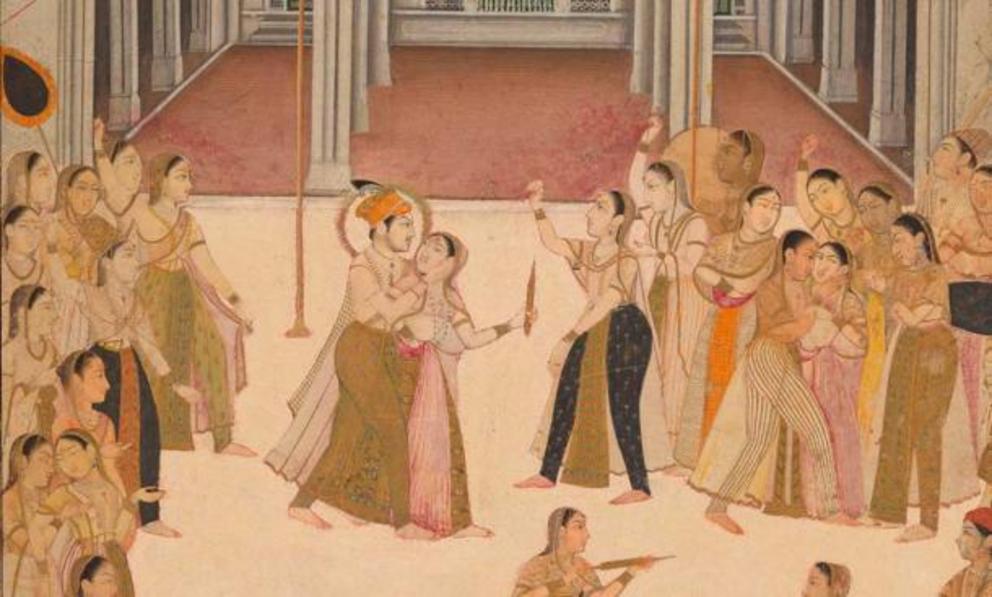 Emperor celebrating with ladies in the harem
Emperor celebrating with ladies in the harem
The Varied Role of Women in the Mughal Harem
Thoughts of a pleasure garden tend to come to mind when thinking of a harem, but that is far from the truth. Most of the women that lived there were female employees and relatives of the emperor. Only five percent of the women served for the sexual pleasure of the emperor; they were his queens and concubines. The residents of the harem practiced the parda, in front of all men, except the emperor. The literal meaning of the word parda is a veil, in the Mughal period women would cover themselves from head to toe to cover their face and skin, as well as concealing their form from men.
In an article published in South Asian Studies, Gull-i-Hina describes how the Mughal women were expected to behave. “The public lives of women of nobility were governed by the laws of seclusion. The practice of parda, or the sequestering of women behind the veil or wall, had already been known in ancient and medieval India and had been used throughout history by many of the upper classes. By the time of the Mughals, seclusion was an accepted way of life for aristocratic families.”
A vast majority of women inhabited the harem, also known as the zanana or zenana. They each had a specific role to play, and the Urdubegis were responsible for security. “The palaces in which the zanana women lived were self-sufficient cities with a full range of castes, occupations, and administrators, and were as cosmopolitan a mix of religions, nationalities, and artistic talents as to be found in any metropolis of the time,” explains Ellison Banks when discussing the harem in her book Nur Jahan: Empress of Mughal India .
Due to the number of inhabitants, there was a need for female employees that would help maintain the smooth functioning of the harem. Thus, apart from eunuchs, there were lady officials like the Angas (foster-mother), the Daroghas (matrons), Mahaldars (superintendents), and Urdubegis (armed women guards). These women were married and served in the harem during their hours of duty, otherwise, they lived in their own homes away from the harem.
Three things helped sustain the Mughal emperor’s power: his army, his treasury, and his women. The first two were not directly linked to the king, but the Harem, on the other hand, was closest in proximity to him. The king spent a lot of time there, thus there was a need for trustworthy and capable guards. Since only eunuchs and women were allowed in the harem, a few among them were selected and trained as proper warriors, capable of guarding the women without the need for male guards.
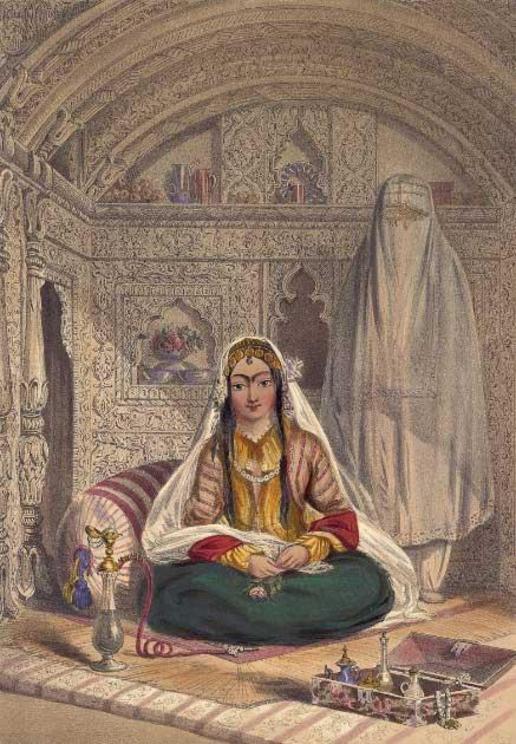 Women in the harem practiced parda, or the veil, in front of all men except the emperor.
Women in the harem practiced parda, or the veil, in front of all men except the emperor.
The Urdubegis –Female Warriors of the Mughal Harem
The Urdubegis were trained female warriors, who served as guards in the proximity of the harem. For them to become guards, they had to belong to tribes that did not practice parda. A guard would have had to be visible to men on certain occasions, including times when they were traveling. Therefore, to ensure the protection of their charges, the Urdubegis had to be willing to sacrifice the veil so that they could guard the hidden queens and princesses. These women usually came from Habshi, Tartar, Turk, and Kashmiri tribes.
The Urdubegis have been mentioned during the times of Emperor Babur and Humayun. Therefore, it can be said that they came into being with the coming of the Mughals as there is no mention of Urdubegis before that. There may have been female guards with different names, but no mention of the Urdubegis specifically has been discovered to date.
The guards were trained in the use of bows and arrows, and spears. Along with long-range weapons, they were taught to use short daggers and swords. Taught the art of fighting, these women had to be trustworthy because they would not only be guarding the queen and the rest of the harem but the king as well. The Mughal emperor spent the most time in the harem, which is why why the guards had to be trusted not to betray the emperor in the one place where he would be the most vulnerable.
“The Urdubegis of the Mughal court was so skillful in warfare, that during the war of succession, Aurangzeb rejected to visit Shah Jahan because he feared the female armed guard would murder him,” wrote Kishori Saran Lal in his book The Mughal Harem when discussion the ferocity and strength of the Urdubegis
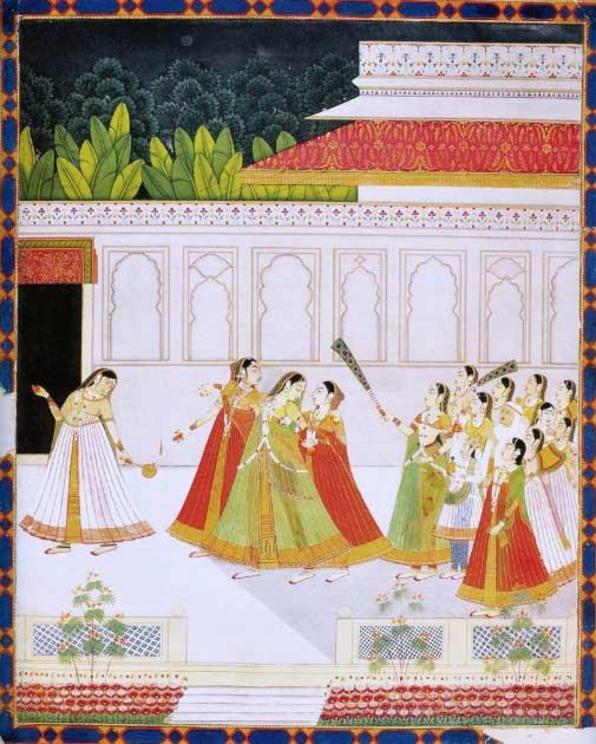 New entrant to a princes’ harem.
New entrant to a princes’ harem.
Evolution of the Urdubegis Role
The women would accompany the emperor everywhere he went. In 1527, Babur conquered India and set about laying the foundations of the Mughal Empire, however, both Babur and Humayun ruled from their encampments. The first two Mughal kings were unable to lay down a solid foundation, which meant they kept wandering. As they traveled, their wives and other female companions accompanied them, and to keep them protected but hidden, female guards were assigned to the mobile harem.
These female guards were vital especially when the haram accompanied the emperor on his travels or battle excursions. Their presence outside the women’s tents ensured exclusivity and regulation. The guards, both male and female, were swapped every twenty-four hours to guarantee that they were alert and to prevent internal conspiracies from forming.
Akbar came to power in 1556, the third emperor of the Mughal Empire. At the time of his ascension, the empire did not have a solid foundation. However, in his 49-year reign, the Mughal Empire had gained permanence. Grand palaces were constructed, and, usually, the harem would be located close to the emperor’s lodgings. However, the male guards that protected the emperor could not venture into the harem, so the female guards, the Urdubegis, gained a more significant role.
Not all Urdubegis were originally warriors. Some moved up in the ranks over time. For example, the only known Urdubegis once served as the nurse for Emperor Humayun, the father of Akbar and the second Mughal emperor. When Humayun died in 1556, his nurse was promoted to the chief of the Urdubegis during his son’s reign.
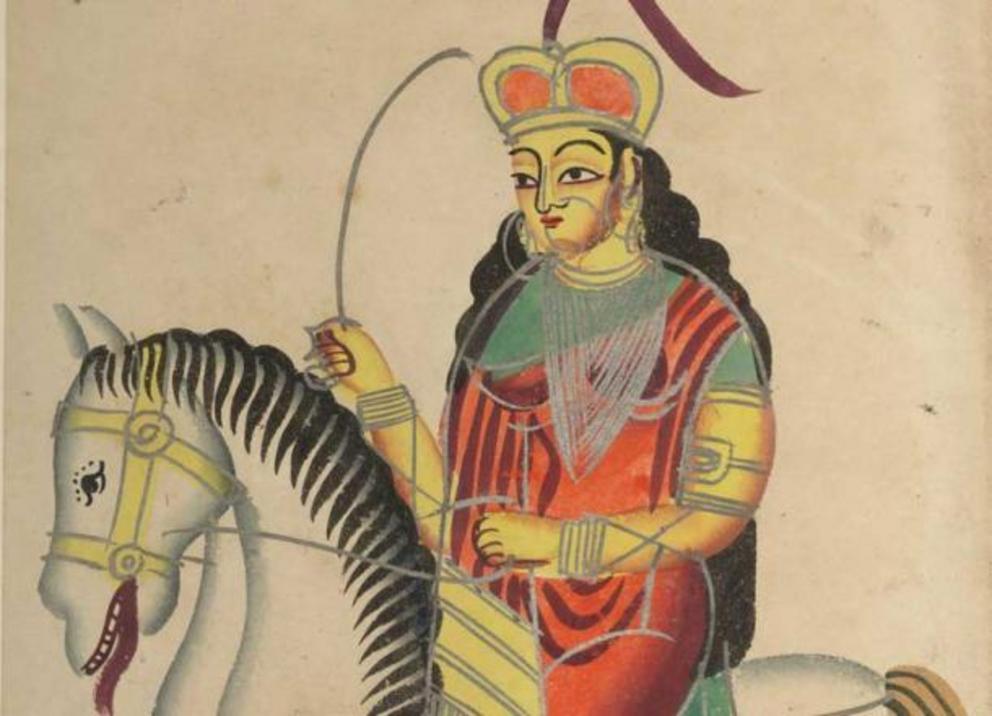 Only one of the Urdubegis has been remembered by name. Representational image.
Only one of the Urdubegis has been remembered by name. Representational image.
Bibi Fatima - The Only Known Urdubegis
Unfortunately, there is very little information regarding the numerous women who protected the harem. Only one name appears in written records, that of Bibi Fatima, chief of the Urdubegis. Servingduring the life of Emperor Humayun, her name is mentioned in the Humayun-Nama, written by Gulbadan Begum, his half-sister. Perhaps Bibi Fatima was mentioned because a woman wrote the biography and found the contributions of the female guard worthy of remembrance.
Originally Bibi Fatima had served Emperor Humayun as his wet nurse or Anka. She took care of Humayun when he fell gravely ill, nursing him back to health, and continued to care for him until his death in 1556. She continued to serve under Emperor Akbar , who rewarded her for her loyalty and dedication to his father, promoting her to the chief of the Urdubegis. Although she was probably not as trained as a warrior, like the women under her, Bibi Fatima earned her place, proving to the emperor that she would be loyal to the king, no matter the circumstances.
The Humayun-Nama claims that she had a daughter called Zuhra. In appreciation for her work, Zuhra was later married off to Hamida’s (Humayun’s wife) brother, who would go on to murder her, despite her mother’s best efforts to rescue her daughter. The sad incident is mentioned in the Humayun Nama:
“In 1564, Bibi Fatima lamented to Akbar that Khwaja Mu’azzam had threatened to kill his wife Zuhra, who was her daughter. The emperor consequently sent the Khwaja word that he was coming to his house and followed the message closely. As he entered, the Khwaja stabbed Zuhra and then flung his knife, like a challenge, amongst the loyal followers.”
It seems that Bibi Fatima continued to serve her king, because there is no mention that she left her post after the incident. However, one can imagine the heartache a mother who lost her child must have gone through. She deserves respect for all her service, regardless of the circumstances. Luckily, we know the name of at least one Urdubegis.
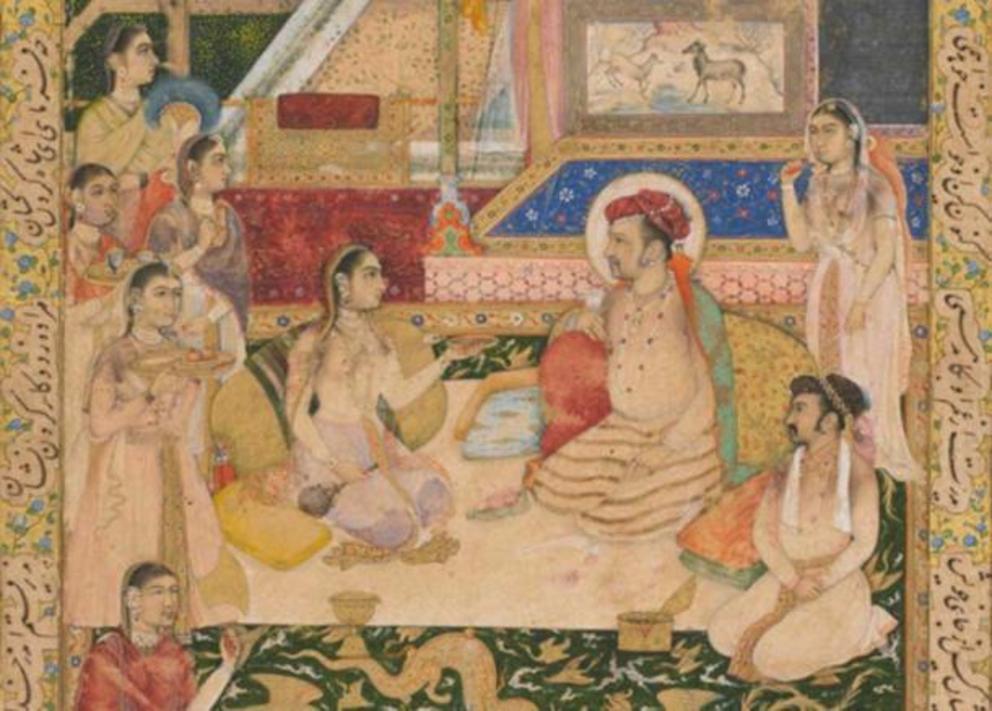 Nur Jahan entertaining the Mughal emperor.
Nur Jahan entertaining the Mughal emperor.
Why Have the Urdubegis Been Forgotten?
With the coming of the British in the 18th century, the Mughal Empire fell into decline. However, it wasn’t until 1858 that the last king was removed from his throne and replaced by British rule. When Bahadar Shah Zafar lost his crown, the Mughal harem ceased to be, thus there was no longer a need for the Urdubegis. Their main task of protecting the king and the harem had ended.
Political decay lowered the status of women and female guards became extinct. In this new context, women were seen as weak and therefore rules were applied that subjected women to incarceration within their own homes. However, the strength and dedication of the Urdubegis ensured that they have been remembered to some extent.
We know more about the Urdubegis as a whole, rather than individually, which is a shame because the stories of these female warriors must have been fascinating. They were privy to the emperor’s most inner moments, and had they had recorded their stories, we would know a lot more about the life of the Mughal kings. Despite the scarce information, they have left an imprint upon history, albeit minute.
For full references please use source link below.

